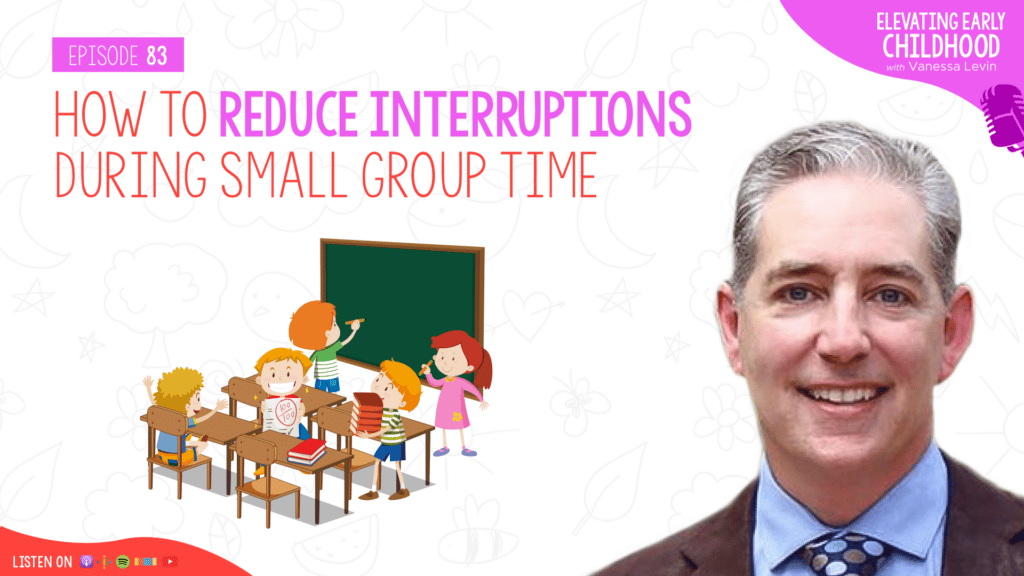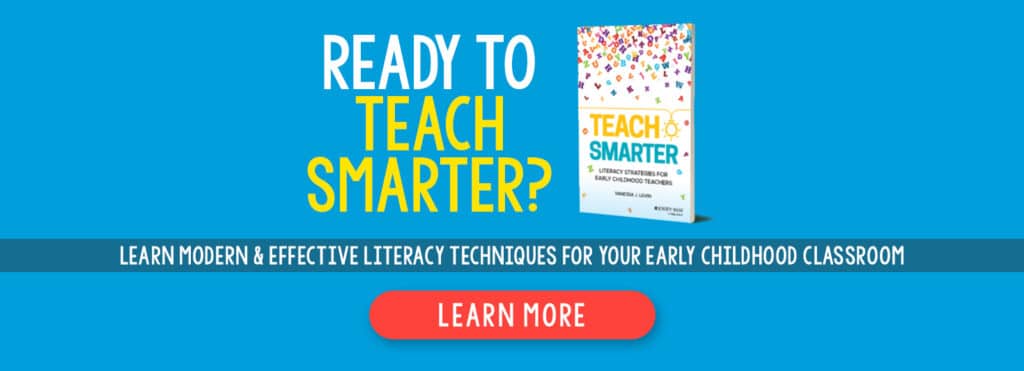It’s no secret that small group time can be challenging, even for the most seasoned early childhood teachers.
Why is that?
Simply because it’s not always easy to manage the other students while working with small groups, which means the possibilities for interruption can be… infinite.
But what can you do if you’re struggling with constant interruptions during small group instruction?
To answer this question, I’ve invited the amazing Dan St. Romain to join me in this week’s episode, which is part of my Behavior Bites series.
Dan is a nationally recognized behavior specialist, and today, he shares his best tips for reducing interruptions so you can get through your small groups.
Are you ready?
Let’s dive in!
Why Your Students Interrupt You During Small Group Time
Early childhood teachers have to deal with interruptions in the classroom, especially when they’re teaching small groups or one-on-one lessons. Some teachers report that interruptions have increased post-pandemic.
You see, throughout the pandemic, most preschool-aged children had an adult with them at all times. And when adults are always around, it’s easier for them to swoop in and solve problems for the kids.
Learning how to problem solve and become independent is critical for young children. But, with well-intentioned grownups always around to do the problem-solving for them, young children aren’t learning the skills they need to become independent.
Yes, we want children to be independent, but sometimes, we think they are more independent than they really are. So, what do we end up doing? We give them tasks they’re not ready to take on on their own yet, and they end up interrupting us during a time like small group or one-on-one sessions.
Well then, now that we know what the issue is, how do we solve it?
Keep reading to find out…
Think of It Like Teaching a Baby How to Walk
I like to think of teaching children to be independent like teaching a baby how to walk. Now, if you’ve ever been around babies, you know they don’t start walking perfectly right away. They stumble a bit, they fall, and then they get back up and continue. And through that whole process, we make sure to give the baby support.
The same goes for teaching kids to be more independent. Just like you don’t just say “Walk baby, walk!” and let the baby deal with it on their own, you don’t just say to preschoolers “Be independent!” and let them figure it out by themselves.
Children don’t know there is a process to follow to learn to be more independent. So it is our job as educators to give them the scaffolding and the support they need to reach that milestone.
How to Stop Interruptions During Small Group: A Few Tricks to Teach Your Students Independence
Set Up a Routine
You can’t just start doing small groups on day one, despite what your administrator might say. First, you need to set up a routine with your students. This helps them form habits; habits which they can follow even if you’re absent one day or you’re unavailable because you’re busy with small group time.
During small group time, you can have your other students doing an activity they’re used to, which will minimize interruptions. The children won’t need to ask you a thousand questions while you’re trying to focus on a small group if they already know everything about their activity. This is commonly known as independent practice, which is important because young children learn new skills by repeating them over time.
Use Visual Cues
One of the things you can use to help your students become more independent is visual cues. It’s where they can go to get help when you’re not available for them (because, for example, you’re busy with small group time). So, if they’re unsure on how to do something, they can follow the steps on the images you have in the classroom.
If you have visual cues, and you’ve used them to build a routine for your students, they will know where to go if they have questions. Doing so means you’re providing them with a visual that will help them be successful.
Dan shares two more ways to teach students to be independent and reduce interruptions during small group time, so, if you’d like to learn more, make sure to tune in to our interview above. I promise, it’s worth it!
Links Mentioned in this Episode:
Learn more about Dan St. Romain


![[Image quote: “Having [visual cues] in the classroom to support students is super important.” - Vanessa Levin on how to help kids become more independent in the classroom]](https://www.pre-kpages.com/wp-content/uploads/2023/02/EEC083_quote1-1024x1024.png)
![[Image quote: “When kids are interrupting during small group and they're looking for attention, the first thing we have to do is make sure that we are presenting [them with] tasks that are easier [and] that they can do more independently.” - Dan St. Romain]](https://www.pre-kpages.com/wp-content/uploads/2023/02/EEC083_quote2-1024x1024.png)
